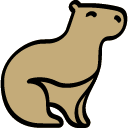
Historical References
Table of Contents
The Atzecs, Mayas and Incas (Mesoamerica)
Discussed sources
This is a general overview of the sources I used. Concrete footnotes can be found in the text itself.
- “Maya cities: placemaking and urbanization” by Andrews, George F., 1975, Norman : University of Oklahoma Press
- “Architektur der Welt – Maya” by Henri Stierlin, 1963 (?), Benedikt Taschen Verlag Berlin
- “Köpfe, Schlangen, Pyramiden in Lateinamerika – Alte Kulturen von Mexiko bis zur Osterinsel” by Karl zum Winkel, 2001, Kehrer Verlag Heidelberg
- https://en.wikipedia.org/wiki/Maya_civilization#History
My first point of interest is: What do their major settlements look like? What was their structure? What building materials were used?
Later, I wish to integrate more knowledge in regards to everyday life, food and festivities.
The Mayas
Cities and City structure
In “Maya cities: placemaking and urbanization” (later shortened to “MCPU“), the author writes about (not exclusively) mayan cities: “… the concept of a bounded open space representing a specific place apart from nature is the essential ingredient necessary in any effort to humanize the natural environment.“1
We know that multiple cultures in mesoamerica used the land around them wisely. Milpas, also known as forest gardens, are the mayan answer to their daily food supply.
While a city is generally viewed as man’s antithesis to the natural order, what I would like to preserve with the Palanteinc is their close relation with nature. As such, Palanteinc city housings are never built without a garden or terrace feature specifically designed for their staple crops as well as naturally occuring plants for decoration and shade. Districts will have shared fields and there will be more intense agriculture around rivers.
There are many reasons for people to settle in a specific spot – which I will not go into right now. In MCPU2, Proto- and Pre-classic Maya settlements were likely assembled around a ceremonial center by scattered groups of houses. Cities, as we think of, later emerged from these settlements by the end of the Late Classic period.
In my original conception of the Palanteinc, one of the reasons for their choice of permanent settlement was a curious 6-sided geological feature protruding from the ground about waist-high that looked almost man made. (I was inspired by the columns I had seen many years ago in Northern Ireland.) They’d chose this location to settle differences for generations and ultimatively settled there.
Fields and Food
In MCPU, the author points out that the jungle was “(…) highly favorable for the Maya peasant, who could plant and harvest two crops of corn each year and support a family of five persons on ten or twelve acres of land.“3 And how long did this work take him, including planting, harvesting and the growth time of the crop itself? Only an estimated 50-75 days! And no (or little) need to water the plants at all, as the climate supplied enough water.
- Beans take betwen 50-55 days
- Maize takes between 50-70 days for fresh consumption and 80-110 days for grain/storage
- (Summer) Squash takes about 60 days to grow
Beans, maize and squash are well known when discussing diets of indigenous peoples of the Americas. Also known as the Three sisters4, they can be planted in a technique called companion planting.
The original Palanteinc city was located near a river delta; a strategical position I would like for it to keep. Additionally, once I get to world building, I’d like to implement a type of rice which they could have farmed there.
Footnotes
- “Maya cities: placemaking and urbanization” by Andrews, George F., 1975, Norman : University of Oklahoma Press, page …? ↩︎
- “Maya cities: placemaking and urbanization” by Andrews, George F., 1975, Norman : University of Oklahoma Press, page 14 ↩︎
- “Maya cities: placemaking and urbanization” by Andrews, George F., 1975, Norman : University of Oklahoma Press, page 16 ↩︎
- https://en.wikipedia.org/wiki/Three_Sisters_(agriculture) (2023-11-20) ↩︎
Dong Son culture (Indonesia/Vietnam)
Discussed sources
- https://en.wikipedia.org/wiki/Dong_Son_culture
